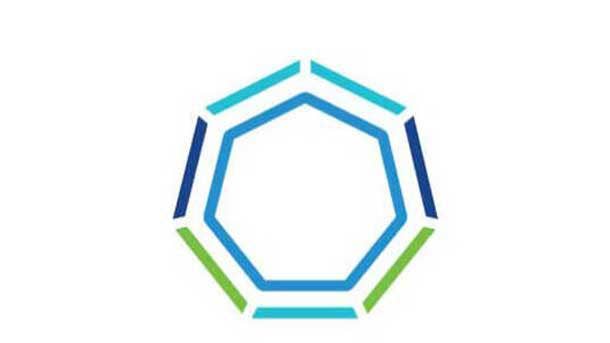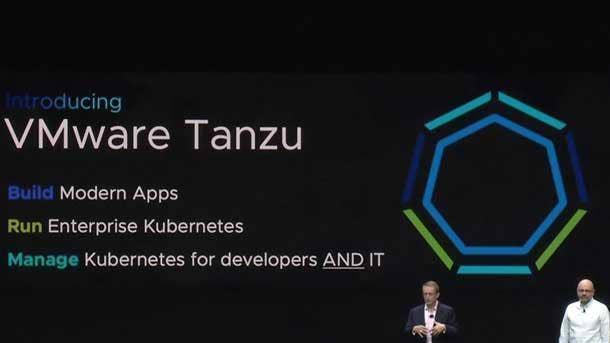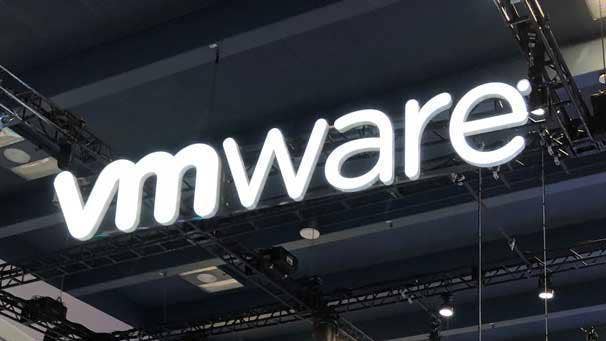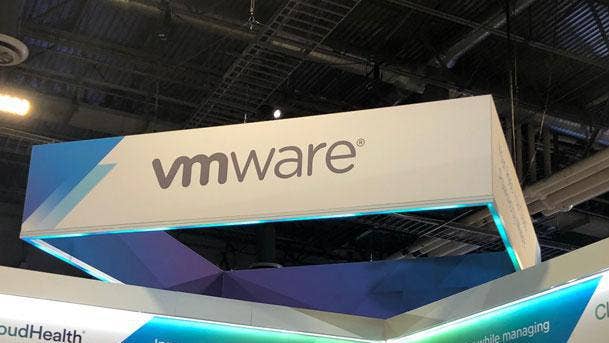VMware CEO: Why Tanzu ‘Wins’ Over IBM’s Red Hat OpenShift
CEO Raghu Raghuram talks to CRN about how VMware Tanzu bests Red Hat OpenShift, AWS, Microsoft Azure and Google Anthos when it comes to Kubernetes, as well as VMware’s strategy in 2022 post-Dell Technologies.

Raghu Raghuram On Tanzu Competition, Dell And 2022 Strategy
VMware Tanzu is besting Red Hat’s OpenShift in head-to-head competition via its broader Kubernetes portfolio, interoperability capability and “deeper” integration with vSphere, said VMware CEO Raghu Raghuram.
“Tanzu stacks up very well against [Red Hat OpenShift],” said Raghuram in an interview with CRN. “We are winning a lot of accounts head-to-head against them.”
VMware’s CEO is bullish about his company’s future this year as it will mark the first full year as an independent entity following its recent spin-off from Dell Technologies. Raghuram has big plans in store for forming new strategic vendor partnerships, betting on channel partners and making VMware the leading multi-cloud software provider.
In an interview with CRN, Raghuram talks about VMware Tanzu Kubernetes’ advantage not only over IBM Red Hat, but AWS, Microsoft Azure and Google Anthos as well. “We are truly multi-cloud. Products like Anthos are primarily a single cloud with some extensions, if needed, to other places. It is not their primary business,” said Raghuram.
Additionally, he explains why channel partners are more critical than ever to customers. “Channel partners have a tremendous opportunity because they can provide three things that customers are looking for: time, talent and trust,” Raghuram said.

How do you view the progress Tanzu is making against the competition, especially IBM Red Hat? How does Tanzu stack-up against Red Hat OpenShift this year?
Tanzu stacks up very well. We are winning a lot of accounts head-to-head against them. So firstly, the macro thing to remember is, application modernization and the build-out of new applications is still at a very early stage. So the vast majority of the market is ahead of us. … In a head-to-head competition against OpenShift, we win in three ways.
One, is we win with the Tanzu portfolio. The Tanzu portfolio is not just about the Kubernetes layer. It’s about management of applications and operations of applications. And it’s about building applications using our Tanzu application platform. So we have a more comprehensive portfolio that customers like.
The second is, it’s a more modular portfolio. You don’t have to buy all or nothing, right? You can get pieces of it. And many of those components of Tanzu actually work with OpenShift. So customers use it with OpenShift. For example, on management technologies, customers use it with OpenShift. In fact, we want to collaborate with Red Hat on making these two technologies work together because it benefits the customer.
The third thing is the vast majority of Red Hat OpenShift runs on top of vSphere. We obviously work with Red Hat to make sure OpenShift runs great on us. But also because Tanzu is in-house at VMware, we are able to do deeper integrations that are not possible with a third party. Like deeper core level integration. For example, we find that containers can run much much faster and you can pack them more densely saving customers money.
So we have the entire VMware portfolio, not just vSphere, and the same thing with our networking solutions, etc. So our Tanzu portfolio has management in it. It has networking and security in it. It has application developer platforms, and it the Kubernetes runtime. So the breadth of our portfolio is really the very best.

With VMware and other vendors partnering more closely with hyperscalers like Amazon, Microsoft and Google, how does VMware Tanzu stack up against those public cloud players Kubernetes offers like AWS, Azure and Google Anthos? How do you compete and partner at the same time?
If you look back at the history of our businesses, there are always companies that work well together in some parts and compete in some other parts. Because any company of any size has a portfolio of products, some of the products are complementary while some of the products are competitive. With the hyperscalers, it is similar. We partner with them phenomenally well on our core VMware Cloud Foundation stack. We partner with them on running Tanzu in the public clouds because it is to the customers benefit that the application gets built faster using the cloud of their choice. And it’s beneficial to the cloud provider because now they get more workloads on their platform. So it’s a win-win-win.
But having said that, they also have Kubernetes solutions, AWS Outposts for example, a Kubernetes solution that they want to make multi cloud. However, they are spending billions and billions of dollars on building out data centers and infrastructure. So their first preference is always to bring workloads to their platform. So the customers that would tend to go to Anthos, is a customer that has largely bet mostly on Google, and they have a few applications elsewhere, mostly on-premise. Anthos, by the way, works with vSphere on-prem. So we win that way too.
So that’s the distinction. We are truly multi-cloud. Products like Anthos are primarily a single cloud with some extensions, if needed, to other places. It is not their primary business.
Their primary business is to build out data centers all over the world and build services that make building and running applications possible in those data centers. In other words, they’re largely focused on their own silos.
It does include AWS and Azure as well?
Yes.

What is one big thing you’re enjoying as an independent company now post-Dell?
We are enjoying conversations at a much more strategic level with companies that we had previously not had the opportunity to do that. How and where that materializes into products that benefits the customers and the channel is down the road. But we are already seeing that. Also, that opens up the ability for engineers to innovate with other partners in ways that we have not done so before. So the possibilities are what’s interesting at this point in time.
As an independent company, are there any specific vendor partners this year that you’re looking at to either double down on or form new partnerships with?
Firstly, the partnership with Dell is going great. It continues to go from strength to strength. Even though the corporate structure is different, on the technology front and the go-to-market front, we work really well together. We have ambitious plans this year in terms of our joint financial goals and product goals. You will see some lots of innovation coming out this year.
So having said that, in terms of other partners, there’s not too much mystery there. I mean, you know the key players that we have worked with both on the client side on the server side—the workload side on the workforce side. There is a whole variety of operating system players and device manufacturers on the client side. There also a variety of server players as well. So that’s where you can expect us to go deeper, in addition to the cloud players.
The other set of partners: we are increasing our focus on, and especially within the community that reads CRN, our focus on nationally-sized system integrators, regionally-sized system integrators, and small services-oriented partners.
Channel partners are building up a services practice because the cloud is all about taking somebody to the cloud or modernizing applications, or doing security for them, which all require more services capabilities. We are definitely focusing more on that community: system integrators, MSPs, etc.

If you were a channel partner, what would you do if you wanted to grow your VMware business significantly?
It’s a phenomenal time to be a channel partner. Because if you talk to customers, they are really in need of three things: time, because they all want to move fast and they don’t have time to take a very slow modernization journey. The second is talent. The talent to either build modern applications or the talent to operate modern environments. The third is trust. Who do they trust in order to do all these things and to be their partner on this journey?
Our partners who are serving their customers, especially when customers trust them, are in a phenomenal position. Because they can address the talent gap for the customers, they can address the time gap for the customers, and they can address the trust gap for the customers. … So it’s a great time for partners to stand up and be counted along these three dimensions for their customers.
How is VMware helping channel partners around what you said, providing customers with time, talent and trust?
We can help them in each of those areas. VMware is the most trusted solution foundation for our customers as in their day-to-day business critical operations. So if our partners build solutions based on our technology, they can gain even further trust.
Second is, most of our partners understand our technology and our customers understand our technology. So you don’t have to go through a massive reskilling of your customer base, and your talent base as a channel partner if you go forward with VMware.
Then the third thing is time. Our technologies shorten the time to migrate into the cloud, shorten the time to building new applications, save people money, etc.
So that is the reason channel partners should be excited about working with VMware going forward even more. Because we help their customers save time and we help them save time. We help them leverage their existing talent. And we help them build on their trusted foundation that they have with their customers. At a macro level, that is really the value proposition: time, talent and trust.

What is VMware’s strategy in 2022 to capitalize on huge market trends?
What we are seeing is customers that have had the initial wave of success with digitalizing their front ends in the cloud, now they’re stepping back and saying, ‘Look, how do we accelerate digital transformation as a whole?’ And No. 2, ‘How do we take advantage of all of the cloud assets that are out there?’ This next phase of digital transformation is not just totally the front office applications, but the back office and all the processes. Effectively, it’s a reinvention of the companies, of our customers, as digital companies. That’s one.
The second part of it is blurring the boundary between physical and digital. So that is leading them to say, ‘Look, we now have enough practice with the cloud. We’re going to be really smart about what applications we put where.’ In other words, they’re going to become cloud smart. So they’re going to use multiple clouds, use the edge, have some applications in the data center, etc. So that is the world that our customers are going in. We call it multi cloud.
It’s a very exciting time from that point of view because it gives rise to the next wave of innovation of cloud, which going to be about multi cloud. We are super excited by that because we see the opportunity to provide software platforms that can help our customers wherever they want to deploy them, build their applications, deploy their applications, secure their applications, connect them all together, manage them, etc. So that’s really the next phase of the VMware’s mission, if you will, and where we can be of service to our customers. And it’s not just this current year, it’s a secular trend for the next 5 years to 10 years.
So we have started executing against that. Tanzu is a big part of that effort. What we’re doing with the cloud partners in taking our infrastructure and running it in the cloud is a big part of that. Because a lot of traditional applications benefit from that. What we’re doing in cybersecurity and networking is a big part of that. What we’re doing with pivoting our management portfolio to focus on native public workloads, is another big part of that. And of course, delivering all of that not just a software, but also as-a-service. So those are all things that I’m focus on this year.
Do you think the Golden State Warriors are going win the NBA championship this year?
Yeah man. That’s what I’m hoping. Though these new injuries scare me a bit. But if they’re healthy, I think they can give the Milwaukee Bucks a run for their money. I’m picking the Bucks in Warriors in the NBA Finals.